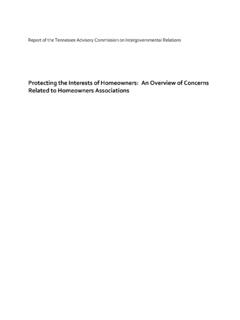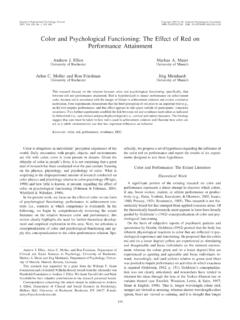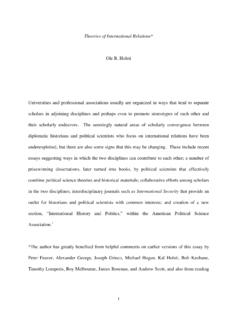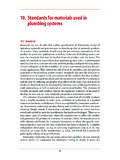Transcription of THE NHSN STANDARDIZED INFECTION RATIO (SIR)
1 1 | P a g e THE nhsn STANDARDIZED INFECTION RATIO (SIR) A Guide to the SIR Updated March 2019. Please see Page 2. The STANDARDIZED INFECTION RATIO (SIR) is the primary summary measure used by the National Healthcare Safety Network ( nhsn ) to track healthcare-associated infections (HAIs). As nhsn grows, both in its user-base and surveillance capability, the SIR continues to evolve. Highlighting the SIR and changes resulting from an updated baseline, this document is intended to serve both as guidance for those who are new to this metric as well as a useful reference for more experienced INFECTION prevention professionals. 2 | P a g e CORRECTIONS AND UPDATES AS OF MARCH 2019 Recent changes to this document are listed here: Page 44: Addendum to nhsn Guide to the SIR Page 45: Addition of Surgical Site infections , Hospital Outpatient Department (HOPD) Procedure/SSI SIR Model Page 47: Addition of Outpatient Procedure Component Surgical Site infections (OPC SSI) SIR Model 3 | P a g e Table of Contents Overview of the STANDARDIZED INFECTION RATIO (SIR) _____ 4 Calculating the Number of Predicted infections _____ 5 Example: Logistic Regression Model (SSI) _____ 5 Example: Negative Binomial Regression Model _____ 8 Finding and Interpreting SIRs in nhsn _____ 11 How do I Interpret the SIRs?
2 _____ 12 SIR Guide Supplement: Risk Adjustment Factors Included in the SIR, 2015 Baseline ___ 14 Introduction to the SIR Guide Supplement _____ 14 CLABSI Central Line-Associated Bloodstream INFECTION _____ 15 MBI-LCBI Mucosal Barrier Injury Laboratory-Confirmed Bloodstream INFECTION _____ 19 CAUTI Catheter-Associated Urinary Tract INFECTION _____ 20 VAE Ventilator-Associated Events _____ 24 a) Total VAE _____ 24 b) INFECTION -related Ventilator-Associated Complication (IVAC) Plus _____ 25 SSI Surgical Site infections _____ 26 MRSA Bacteremia Laboratory-Identified Events _____ 36 Clostridioides difficile (CDI) Laboratory-Identified Events _____ 38 Using an Intercept-Only Model to Calculate the Number of Predicted Events _____ 41 Additional Resources _____ 42 ADDENDUM TO THE nhsn GUIDE TO THE SIR _____ 44 Hospital Outpatient Department (HOPD) Procedure/SSI SIR Model _____ 45 Outpatient Procedure Component Surgical Site infections (OPC SSI) _____ 47 4 | P a g e Overview of the STANDARDIZED INFECTION RATIO (SIR) What is the SIR?
3 The STANDARDIZED INFECTION RATIO (SIR) is a summary measure used to track HAIs at a national, state, or local level over time. The SIR adjusts for various facility and/or patient-level factors that contribute to HAI risk within each facility. The method of calculating an SIR is similar to the method used to calculate the STANDARDIZED Mortality RATIO (SMR), a summary statistic widely used in public health to analyze mortality data. In HAI data analysis, the SIR compares the actual number of HAIs reported to the number that would be predicted, given the standard population ( , nhsn baseline), adjusting for several risk factors that have been found to be significantly associated with differences in INFECTION incidence. In other words, an SIR greater than indicates that more HAIs were observed than predicted; conversely, an SIR less than indicates that fewer HAIs were observed than predicted.
4 SIRs are currently calculated in nhsn for the following HAI types: central line-associated bloodstream infections (CLABSI), mucosal barrier injury laboratory-confirmed bloodstream infections (MBI-LCBI), catheter-associated urinary tract infections (CAUTI), surgical site infections (SSI), Clostridioides difficile infections (CDI), methicillin-resistant Staphylococcus aureus bloodstream infections (MRSA), and ventilator-associated events (VAE). Why not rates? In the past, nhsn has published annual HAI rates for device-associated infections . These rates, or pooled means, were calculated using aggregate data reported to nhsn . The total number of infections was divided by the applicable number of device days for that time period. However, a problem with strictly using pooled mean rates is that they cannot reflect differences in risk between populations, and therefore lose comparability over time and across entities.
5 For example, calculating rates from two facilities serving entirely different patient populations can lead to an unfair comparison. One solution to this problem is the stratification of pooled means, as was done with location-stratified CLABSI and CAUTI pooled means. However, this method only allows for comparison of rates within strata, and does not lend itself to calculating an overall performance metric for a facility. Instead, the SIR allows users to summarize data by more than a single stratum ( , location or procedure category), adjusting for differences in the incidence of INFECTION among the strata. For example, nhsn allows users to obtain one CLABSI SIR for their facility, adjusting for all locations reported. Similarly, users can also obtain one CLABSI SIR for all intensive care units in their facility.
6 Additionally, the SIR allows for a comparison to the national benchmark from a baseline time period, and can be used to measure progress from a single point in time. In other words, the SIR permits comparisons between the number of infections experienced by a facility, group, or state to the number of infections that were predicted to have occurred based on national data ( , baseline data). 5 | P a g e How is the SIR calculated? The SIR is calculated by dividing the number of observed infections by the number of predicted infections . The number of predicted infections is calculated using multivariable regression models generated from nationally aggregated data during a baseline time period. These models are applied to a facility s denominator and risk factor data to generate a predicted number of infections .
7 Please refer to the SIR Guide Supplement at the end of this document for more details regarding the models. = ( ) ( ) In order to enforce a minimum precision criterion, SIRs are currently not calculated when the number of predicted infections is less than This rule was instituted to avoid the calculation and interpretation of statistically imprecise SIRs, which typically have extreme values. Calculating the Number of Predicted infections The number of predicted infections in nhsn is calculated based on the 2015 national HAI aggregate data and is adjusted for each facility using variables found to be significant predictors of HAI incidence. nhsn uses either a logistic regression model or a negative binomial regression model to perform this calculation.
8 Logistic regression models are used when there is an opportunity for a single outcome for each exposure ( , SSI following a procedure). Negative binomial regression models are used when estimating incidence from a summarized population ( , CLABSIs in a Medical ICU). Examples in applying each model type are provided below. Example: Logistic Regression Model (SSI) The logistic regression model is the specific type of model used for surgical site INFECTION risk adjustment. At a high level, the model uses a set of fixed parameters (adjustment variables) to predict the log-odds of a surgical site INFECTION following an inpatient procedure. To obtain the total number of predicted SSIs, the following steps are completed in nhsn : 1. Determine the log-odds for each procedure 2. Convert the log-odds into a probability, or risk of INFECTION ( ), for each procedure 3.
9 Sum the risk of infections across all procedures in a given timeframe The sum of the risks from a set of procedures will amount to the total number of predicted infections for that same set of procedures. Table 1 below shows the risk factors found to be significant for abdominal hysterectomy (HYST) procedures (Complex 30-Day model) in nhsn . Note that each risk factor s contribution to the SIR varies, as represented by the parameter estimate for each factor. Parameter estimates describe the relationship between the variable and the risk of SSI; positive parameter estimates indicate that the risk of SSI increases with 6 | P a g e increasing values of the variable. Negative parameter estimates indicate that the risk of SSI decreases with increasing values of the variable. Table 1.
10 Risk Factors for SSI HYST: Complex 30-Day Model (2015 Baseline) The parameter estimates from Table 1 can be plugged into the following general logistic regression formula: The probability of SSI is calculated using the logistic regression model above, by utilizing the relationship between the log-odds and the probability (risk). Let s say we have a patient (Patient 1) who is 32 years old, has diabetes, and a BMI score of 29. She had an ASA score of 2 and her procedure took place in an oncology hospital. We can use the model above to plug in these values as shown below: Factor Parameter Estimate P-value Variable Coding Intercept - - Diabetes < Yes= 1 No= 0 ASA Score < 1= 1 2= 2 3= 3 4/5= 4 Body Mass Index (BMI) 30= 1 < 30= 0 Patient Age < Patient s age/10 Oncology Hospital Oncology hospital= 1 Non-oncology hospital= 0 ( )= + 1 1+ 2 2+ + , where: = Intercept i = Parameter Estimate Xi = Value of Risk Factor (Categorical variables= 1 if present, 0 if not present.)















